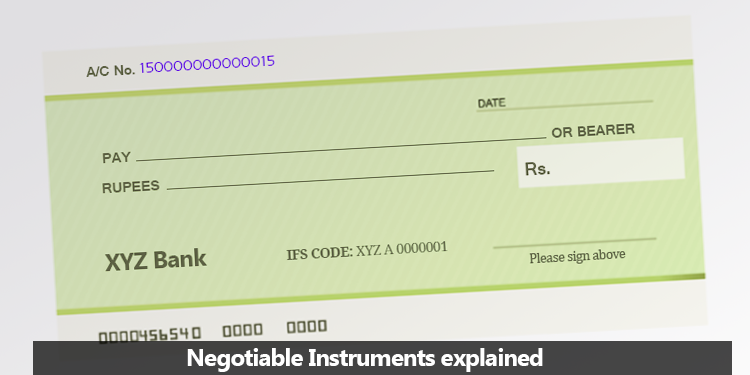A Cheque is a specially printed paper form issued by the banks to their customers to draw money or pay monies to third parties from their running account like SB/Current Account, Cash Credit Account etc. that contains following features.
- When you look at a cheque, you find the name of the bank and address of the branch prominently printed on the face of the cheque.
- The IFS code of the branch is also printed in the cheque leaf. IFSC stands for the short form of for Indian Financial System Code is an alphanumeric code that uniquely identifies a bank-branch participating in the electronic funds’ transfer (NEFT&RTGS) systems. An alpha-numeric code is an 11 digit code with the first 4 alpha characters representing the bank, and the last 6 characters representing the branch. The 5th character is 0 (zero). IFSC is used by the NEFT & RTGS systems to identify the originating / destination banks/branches and also to route the messages appropriately to the concerned banks/branches.
- The customer’s account number is printed on the cheque leaf.
- At top right corner, you find space for entering the date of the cheque (normally in the format of 8 small squares with DD/MM/YYYY) which is to be filled in by the drawer of the cheque at the time of issuing a cheque. A cheque bearing a date older than three months is known as ‘stale cheque’. A stale cheque has no validity and therefore it cannot be presented to the bank for payment without re-validating its date by the drawer with his full signature near the alteration. When a cheque bears a future date it is called ‘postdated cheque. The Postdated cheque indicates that it is due for payment only after the due date written on the cheque.
- Succeeding two lines after the date row begins with the word ‘PAY’ and ends with the word OR BEARER. The vacant space between the word PAY and the word OR BEARER is meant for writing the payee’s name. When the word BEARER is cut by a stroke of the line, the instrument becomes order cheque.
[The meaning of ‘Bearer Cheque’: Bearer cheque means a person in possession of a cheque which is payable by the drawee bank to the bearer of the cheque.
The meaning of ‘Order cheque’: ‘Order cheque’ means the payment of that cheque will be made by the bank only to ‘Payee’ or to a person to whom payee has endorsed to collect the payment and not to the bearer. The endorsement (indorsement) shall be on the instrument itself.]
6. The following two lines start with the word RUPEES with blank space for writing the amount in words payable. We also find a box at the end of lines. This box is to fill in the amount payable in figures. The amount written in words is called ‘legal amount’ of the cheque and amount written in figures is called ‘courtesy amount’. Where there is a difference between words and figures expressed in a cheque, the amount in words is the amount payable as per Section 18 of N.I.Act 1881. It is customary to return a cheque written only in figures with a reason “Amount required in words”. However, if the amount is written only in words, though it is unusual in form, it is not incomplete and therefore bank is supposed to pay such cheque, failing which they may face the problem and would probably be liable to their customer for any damage or loss incurred through refusal.
7.Underneath the rows kept for writing amount in words and figures, we find vacant space which is reserved for the account holder to sign.
8. Underneath the space provided for drawer’s (Account holder) signature, we find code line. The code line in a cheque is the clear White Band portion at the bottom of the cheque which is exclusively meant for MICR (Magnetic Ink Code Recognition) code numbers to facilitate mechanised cheque processing. In the code line first group of 6 digits indicates the cheque number, the second group of 9 digits indicate the city code (first 3 digits aligned with PIN code used for postal address) next three digit represent the bank code, last 3 digits represent branch code in cheque processing centre and next group of 2 digits like 10, 11,12 and so on indicates the type of instrument like SB, Current account, CC account etc. The code line should not be disturbed to avoid rejection of cheque at the processing centre.



